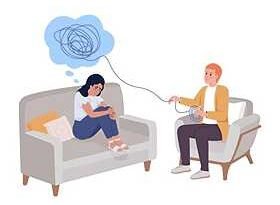The Impact of Trauma: Healing and Recovery
Understanding the Impact of Trauma: Healing and Recovery
Trauma is a pervasive issue that significantly impacts many individuals, often remaining unrecognized and untreated. Research indicates that approximately 70% of adults will encounter a traumatic event at least once in their lifetime. Despite this high prevalence, a substantial number of those affected do not seek or receive the necessary support to process their experiences. The consequences of untreated trauma can be profound, leading to a range of mental health challenges such as anxiety, depression, and post-traumatic stress disorder (PTSD), as well as physical health problems like chronic pain and cardiovascular issues. Acknowledging the signs of trauma is crucial for initiating the healing process. Understanding the various pathways to recovery, including therapy, support groups, and self-care strategies, empowers individuals to reclaim their well-being and foster resilience. By prioritizing awareness and access to treatment, we can better support those navigating the complex journey of healing from hurt.
Understanding Trauma and its Manifestations
An extremely upsetting or stressful event is referred to as hurt. Various types of trauma include:
- Acute trauma: Resulting from a single incident, like an accident.
- Chronic trauma: Ongoing exposure to distress, such as abuse.
- Complex trauma: Multiple traumatic events over a long period.
Common symptoms of hurt can manifest in different ways, including:
- PTSD (Post-Traumatic Stress Disorder): Impacting around 8 million adults in the U.S. annually.
- Anxiety and depression: Often intertwined with trauma experiences.
hurt doesn’t just affect individuals—its effects ripple through their relationships, work, and daily lives. For instance, a survivor of childhood abuse may struggle with maintaining friendships, often feeling unworthy of love. This real-world impact highlights the necessity of effective healing strategies.
Exploring Effective Trauma Therapy Options
There are numerous therapeutic options available for hurt recovery.
Cognitive Behavioral Therapy (CBT)
CBT focuses on changing negative thought patterns. Experts agree on its effectiveness; a well-known psychologist noted, “CBT provides tools that can shift how we think and feel about traumatic experiences.”
Eye Movement Desensitization and Reprocessing (EMDR)
EMDR therapy helps individuals process locked memories. Studies reveal that EMDR has a success rate of over 80% in reducing PTSD symptoms.
Other Approaches
- Somatic experiencing: Focuses on bodily sensations and stress relief.
- Psychodynamic therapy: Explores unconscious processes and past experiences.
Each therapy method offers unique benefits, making finding the right approach essential.
Finding the Right Trauma Therapist for You
When seeking a trauma therapist, consider the following:
- Qualifications: Ensure they have proper credentials and experience in trauma therapy.
- Comfort: You must feel safe with your therapist. The right connection can significantly influence healing.
- Accessibility: Look for a trauma therapist near me or consider online therapy options like TalktoAngel, which makes access more convenient.
The Role of Self-Care in Trauma Healing
Taking care of oneself is essential to recovering from hurt. Here are essential components:
- Self-compassion: Treat yourself with kindness during the healing process.
- Coping mechanisms:
- Mindfulness: Stay present and aware.
- Exercise: Physical activity boosts mood.
- Healthy diet: Nourishing your body supports mental health.
Building a strong support network is also vital. Friends, family, and support groups can provide encouragement and understanding.
Navigating the Path to Recovery: Hope and Resilience
Recovery from hurt requires patience and self-compassion. It’s common to face triggers and setbacks during the journey. Here are strategies to manage challenges:
- Identify triggers: Understand what prompts feelings of distress.
- Create a plan: Develop strategies to cope with those moments.
- Celebrate progress: Acknowledge even small milestones in your journey.
For example, one woman shared her recovery story after childhood trauma. Through therapy and support, she rebuilt her confidence and learned to trust again, demonstrating the power of resilience.
Conclusion: Embracing a Trauma-Informed Future
In summary, trauma is a significant issue that affects many lives but is not insurmountable. Understanding its impact and acknowledging the healing pathways are vital steps towards recovery. Resources are available, from local therapy options to online platforms like TalktoAngel. If you or someone you know is struggling, seeking professional help is crucial. Embrace the path to healing and reclaim your life.




